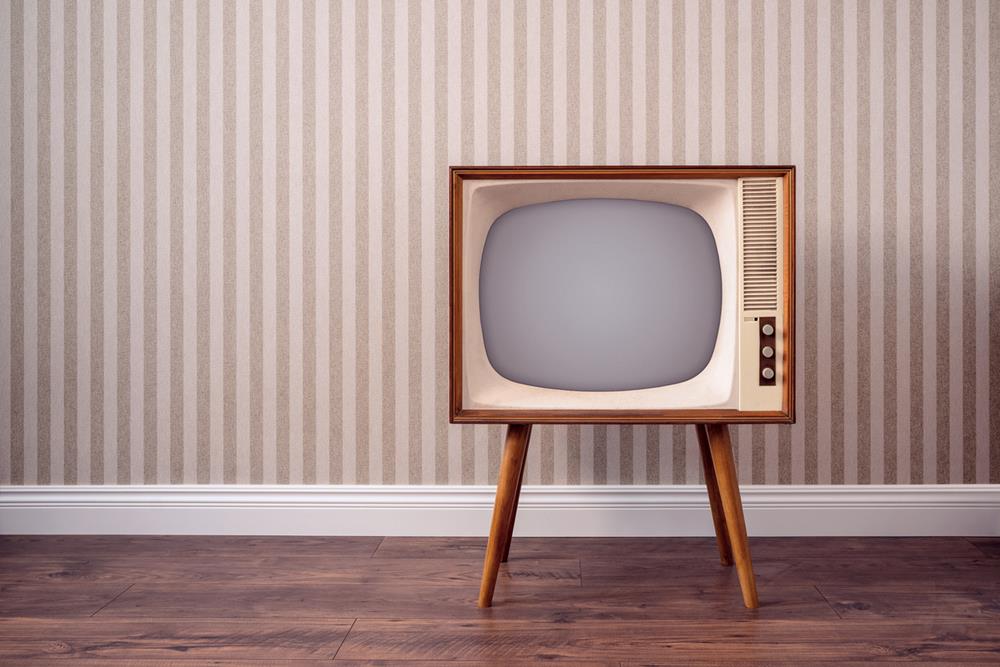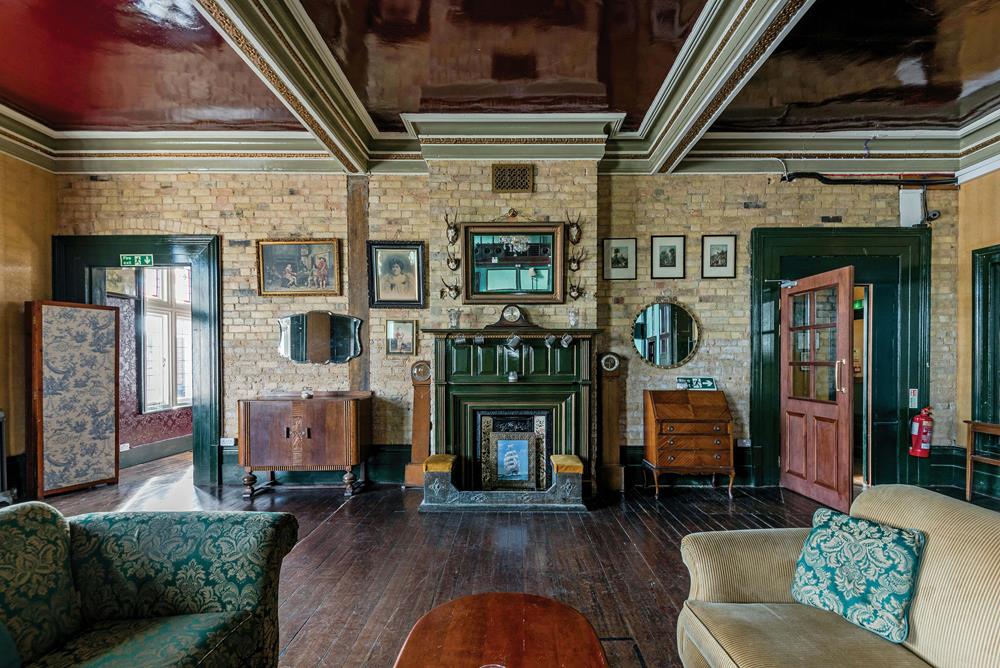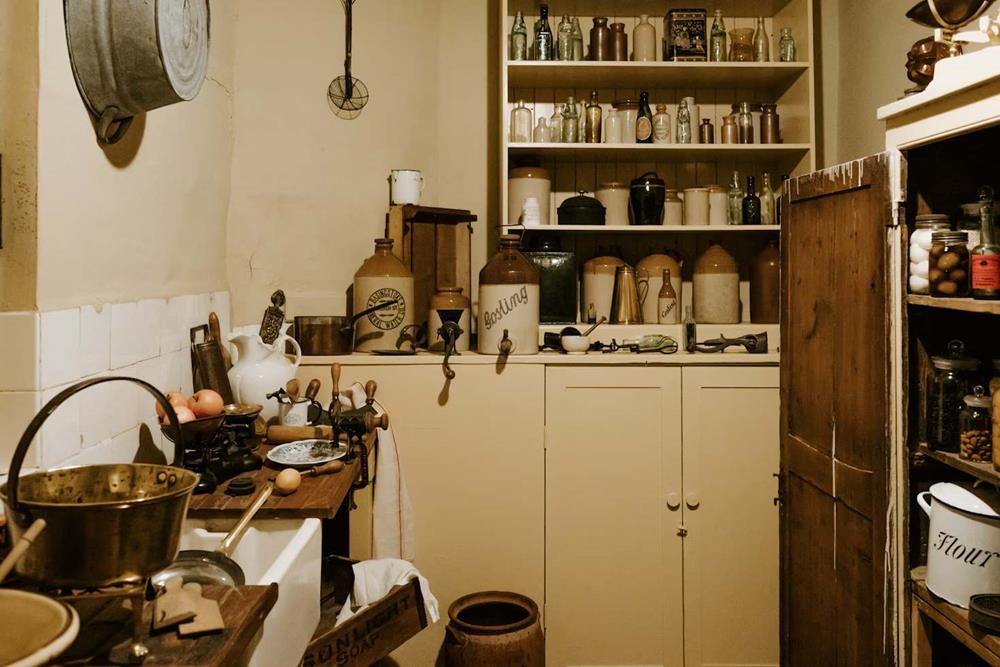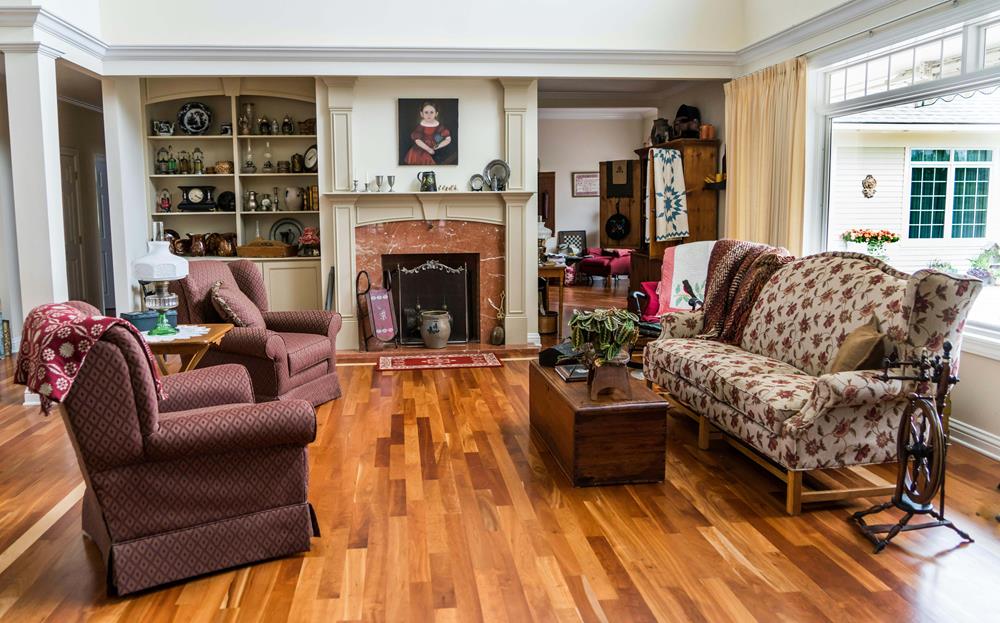The good old 90s was the era of pop and grunge music, dial-up internet, Game Boys, Discmans, flannel shirts, crop tops, chain wallets, Michael Jordan, and the Matrix. Though many of them are cringe-worthy today, they were cool and trendy during their time and helped define the decade. But, have you ever wondered how home decors were then? Dont fret, as well bring you back in time to get a glimpse of the popular interior design styles of the 90s – you might be surprised that they were just as iconic. Let’s take a nostalgic journey back to the popular interior design styles of the 90s, exploring their key characteristics, influences, and lasting impact on contemporary design.
Minimalism in the 90s – Embracing the Art of Less
The 1990s heralded a transformative period in interior design, with minimalism emerging as a defining movement. This shift towards minimalism was not just a change in aesthetic preference but a profound cultural response to the preceding decade’s excesses. The 80s were marked by opulence, with bold patterns, heavy ornamentation, and a saturated palette dominating interiors. In stark contrast, the 90s minimalism movement championed simplicity, clean lines, and a subdued color scheme, epitomizing the ‘less is more’ philosophy.
The Essence of Minimalism
Minimalism as a style goes beyond mere simplicity; it is an intentional reduction, stripping away the non-essential to focus on what truly matters. The color palette leaned heavily towards monochromes—whites, beiges, and grays—creating a canvas that was both tranquil and visually expansive. This was not just an aesthetic choice but a deliberate move to evoke calmness and a sense of order. The clean lines and uncluttered spaces were more than a design trend; they reflected a growing societal desire for balance and mindfulness amidst the rapid changes of the decade.
Functionality and Form
One of the core principles of 90s minimalism was the emphasis on functionality. Every element within a minimalist space had a purpose, with form following function. This principle led to the adoption of open-plan layouts, which not only maximized space but also enhanced the flow of natural light, making interiors feel more expansive and airy. Furniture was chosen for its utility and ability to integrate seamlessly into the overall design, often featuring dual purposes to maximize efficiency in the use of space.
Influence of Japanese Aesthetics
The minimalist movement in the 90s was significantly influenced by traditional Japanese design and aesthetics, which emphasize simplicity, natural materials, and a deep connection with nature. This influence was evident in the use of natural light, which was not just a design element but a way to bring the outside world into the interior space, creating a harmonious blend between the built environment and nature. The use of natural materials such as wood, stone, and bamboo in their most unadorned form further emphasized the minimalist ethos, bringing warmth and texture into the serene and pared-down spaces.
Techno Influence – The Dawn of the Digital Age
As the digital age dawned, technology began to significantly influence interior design. The 90s introduced the concept of “techno interiors,” where the integration of new technologies and gadgets into the home became a design priority. Spaces were designed to accommodate personal computers, entertainment systems, and other tech innovations, leading to the creation of more functional and adaptable living environments. This era also saw the rise of ergonomic furniture and futuristic design elements, reflecting the optimism and technological advancements of the time. Here are examples of how the techno influence shaped interior design in the 90s through the integration of technology and design elements:
- Ergonomic Workstations: The introduction of ergonomic chairs and desks designed to accommodate long hours spent at personal computers, with adjustable heights and support to promote comfort and prevent strain.
- Personal Computers: A central element in homes, often accompanied by bulky CRT monitors, large CPU towers, and a variety of peripherals like printers and scanners, reflecting the growing importance of digital connectivity.
- Entertainment Systems: The integration of high-fidelity sound systems, VCRs, and later DVD players into living spaces, often within custom-built entertainment centers or sleek modular units that matched the aesthetic of the room.
- Tech Gadgets: The proliferation of early digital gadgets like cordless phones, digital diaries, early PDAs (Personal Digital Assistants), and the first-generation gaming consoles, which became focal points in living areas and bedrooms.
Grunge and Industrial Chic in the 90s
The 1990s were a period of diverse aesthetic explorations, and alongside the rise of minimalism, there emerged a contrasting trend that embraced the gritty and raw elements of design: Grunge and Industrial Chic. This style, with its roots in the rebellious spirit of grunge music and the utilitarian simplicity of industrial environments, carved out a unique niche in interior design during the decade.
The Essence of Industrial Chic
Industrial chic took inspiration from the architectural elements of the early 20th-century industrial era, such as warehouses, factories, and other utilitarian spaces. The style is characterized by its embrace of structural features that other design movements might conceal, including exposed brick walls, visible ductwork, and bare pipes. This celebration of the building’s ‘bones’ introduced a new kind of aesthetic that found beauty in raw and unfinished elements.
Materials and Textures
A key aspect of industrial chic is the use of materials that are often considered cold or harsh in other contexts. Metal fixtures, concrete floors, and wooden beams not only serve functional purposes but also contribute significantly to the space’s overall mood. The interplay of different textures—smooth concrete against rough, weathered wood, or the cold sheen of metal juxtaposed with soft textiles—creates a rich, tactile experience that is both edgy and inviting.
Repurposed and Vintage Elements
A hallmark of the grunge and industrial chic aesthetic is the creative repurposing of objects and materials. Vintage and reclaimed items are not just decorative but are often transformed into functional elements of the space. Old factory lamps might become statement lighting fixtures, while reclaimed wood could be used to craft unique furniture pieces or shelving. This approach not only adds character and history to a space but also aligns with sustainable design principles, giving new life to objects that might otherwise be discarded.
Global Fusion in the 90s – Worldly Influences
This was a time when the world felt increasingly interconnected, thanks to advancements in technology, travel, and communication. As people became more globally aware, their living spaces began to reflect a broader palette of cultural influences, resulting in interiors that were rich in diversity and depth.
The Essence of Global Fusion
Global fusion in interior design is essentially about harmoniously blending elements from various cultures to create unique and personalized spaces. This approach goes beyond mere aesthetic appeal; it’s about storytelling and bringing together the rich tapestry of global traditions, crafts, and artistry. The 90s saw a significant shift towards more eclectic interiors, where pieces and influences from across the globe were mixed with ease and confidence.
Cultural Elements and Influences
- Asian Inspirations: The minimalist aesthetics of Japanese design, with its Zen-like focus on simplicity and harmony, found resonance in the 90s global fusion trend. Bamboo furniture, silk textiles, and Shoji screens became popular for their beauty and functional elegance. Similarly, the rich colors and intricate patterns of Indian decor added vibrancy and warmth to spaces.
- African Heritage: African tribal patterns, with their bold geometrics and earthy tones, became a powerful way to inject energy and character into interiors. Artifacts like masks, sculptures, and textiles were not just decorative but were celebrated as pieces of art that told stories of heritage and tradition.
- Mediterranean Influences: The textures and colors of the Mediterranean brought a sun-drenched warmth to interiors. Terracotta tiles, wrought iron details, and mosaic work in hues of blue, white, and green evoked the relaxed, rustic charm of Mediterranean villages.
Personalization and Storytelling
Global fusion interiors are deeply personal, acting as a canvas for individuals to express their stories, travels, and heritage. This approach to design encourages a curatorial eye, where each piece is selected for its personal resonance or the story it tells. Spaces become a reflection of the inhabitant’s journey, interests, and values, making them deeply meaningful and unique.
Revival of Retro in the 90s – Celebrating Timeless Classics with a Modern Twist
The 90s were a dynamic period in the realm of interior design, marked by a forward-looking embrace of technology and minimalism on one hand, and a deep dive into the nostalgic allure of retro styles on the other. This decade saw a resurgence of design elements from the mid-20th century, particularly from the 50s, 60s, and 70s, as these periods were revisited with a blend of reverence and innovation.
The Allure of Retro
The retro revival was driven by a yearning for the simplicity, optimism, and playful spirit of the post-war era. Design elements from these decades were characterized by bold patterns, vibrant colors, and fluid forms that broke away from traditional design constraints. This return to retro wasn’t merely about recreating the past; it was about distilling the essence of these eras and infusing them into contemporary contexts with a fresh perspective.
Iconic Furniture and Design Elements
Key pieces of furniture became the symbols of this retro revival:
- Eames Lounge Chair: Originally designed by Charles and Ray Eames in the 1950s, this chair epitomized the fusion of comfort and high design, combining luxurious leather with molded plywood. Its comeback in the 90s underscored a renewed appreciation for its timeless elegance and ergonomic design.
- Tulip Tables: Eero Saarinen’s tulip tables, with their singular pedestal base and clean lines, were reintroduced into modern interiors, celebrated for their simplicity and ability to harmonize with a range of design aesthetics.
- Egg Chairs: Arne Jacobsen’s egg chair, a hallmark of 60s design with its enveloping curves and swivel base, was embraced once again for its unique blend of privacy and style within open living spaces.
A Playful and Whimsical Approach
The retro revival in the 90s was marked by a playful approach to design. It wasn’t just about the faithful reproduction of past styles but about reimagining these elements in novel ways. Bold geometric patterns, psychedelic prints, and a kaleidoscope of colors from pastel to neon were paired with contemporary materials and textures, creating spaces that were at once nostalgic and distinctly modern.
Country Charm in the 90s – A Homage to Hearth and Home
In the whirlwind of change that characterized the 1990s, from the rise of digital culture to the eclectic blend of global influences in design, there was a comforting counterbalance found in the revival of country charm. This style served as a nostalgic retreat from the fast-paced modern world, offering a return to the simplicity and warmth of rustic living. The country style in the 90s wasn’t just about decorating choices; it was about embracing a lifestyle that valued comfort, tradition, and a connection to nature.
Embracing Natural Beauty and Simplicity
The essence of country charm lies in its celebration of the natural and the handmade. Interiors drew heavily on materials like untreated wood, which brought the tactile warmth of the forest indoors, and stone, which added a rugged, earthy feel to spaces. These materials were not chosen for their perfection but for their ability to convey a sense of authenticity and timelessness.
The Role of Color and Pattern
Soft pastels and a palette inspired by the natural surroundings were key to achieving the country look. Gentle hues of sage green, sky blue, and sun-washed yellow created a backdrop that was both uplifting and restful. Floral patterns, whether in the form of wallpaper, upholstery, or textiles, introduced a sense of the outdoors, blooming with a variety of colors and adding a layer of softness to the rustic backdrop.
Handcrafted Elements and Heirlooms
One of the defining characteristics of country-style interiors in the 90s was the emphasis on handcrafted items and heirlooms. Hand-painted ceramics, with their slight imperfections and unique designs, added a personal touch to kitchens and dining areas. Patchwork quilts, assembled from a mosaic of fabric pieces, not only provided warmth but also served as a visual narrative, piecing together memories and stories in each stitch.
Popular Furniture Styles of the 1990s
- Inflatable Furniture: While inflatable furniture was created in the 1960s, its in the 1990s when it reached its heyday. It became widely popular with teens and tweens. Everyone has them in the bedroom! From chairs to sofas, loungers, and tables, they came in all colors, shapes, and sizes and just blew up in the 90s.
- Wooden Cabinets: Kitchens have modernized greatly today, offering many designs and styles for people to choose from. That wasnt the case in the 1990s, as there was less variety. It doesnt mean that it was also less aesthetically pleasing. Whether left painted or plain, the thick and large wooden cabinets that dominated the decade offered a warm, cozy, homey feel to the 90s kitchens.
- Animal Print: From zebra, tiger, cheetah, jaguar to leopard patterns, animal prints were a massive hit in the fashion world during the nineties. It was literally anywhere! Its no surprise that this trend transcended the runway and came into the realm of interior designing. Zebra lamps, leopard-print couches, jaguar textiles, and other animal printed ornamentations and furniture adorned the peoples homes.
- Track Lighting: Track lighting gained traction in the decade. While they werent accepted by all, citing their clunkiness and bulkiness, they were still a common sight in the ceilings of many 90s homes.
- White Kitchens: In contrast with the explosion of colors and decadent style of kitchens in the 80s, the 90s shifted back to the traditional kitchen, being simpler and less cluttered. The most dominant color for many was white. It was applied nearly to all fixtures, from cupboards, storage units, to countertops, exuding an elegant feel that appealed to the masses.
- Minimalism: The Japanese and Chineses neat and non-ornamental look replaced the wide diversity in hues and shade seen in the previous decade. In the 1990s, many people veered away from the loud colors and chunky furniture and embraced minimal decors, neutral shades, natural or earthy elements, and other Asian accents, which prioritized character over coolness.
- Floral Prints: Spilling over from the 70 and 80s, botanical decors and motifs brimmed the 90s homes. Vine-like designs became popular on kitchen wallpapers, while floral patterns adorned bedroom walls. While hanging floral wall arts were also a popular home decor choice. Floral prints wont just simply go away.
- Hunter Green: A dominant color that surfaced in the mid-90s was Hunter green. This shade was in range in the decade and it hit nearly all parts of the house, from the furniture, walls, living rooms, dining rooms, and even bathtubs. Beautifully complemented by burgundy, gold, bronze, or dark wood shades, everybody just fell in love.
- Canopy Beds: Before the turn of the century, canopy beds became very popular with kids, adults, or simply everyone. Accentuated with draping frills, fabric, fairy lights, it turned the 90s homes into royal chambers. They were spectacular to look at and served as the focal point of the bedroom while exuding comfort and relaxation. Check out the best canopy bedroom styles here.
- Fake Plants: Turning home interiors into indoor gardens continued from the 80s to the 90s. But, while palm fronds and ferns dominated the earlier decade, people from the nineties saw the onslaught of faux plants and became a staple in their homes. Its no surprise as these plastic plants carried the charm of natures green beauty, but were only required to dust them, tossing away the need to take care or maintain anything.
- Folding Screens: Part of the Japanese and Chinese-inspired interior was the proliferation of folding screens. Made from lacquered wooden panels with decorative painting, they were used for a variety of purposes, from dividing rooms, blocking off certain parts of the house, or merely as ornamentation. Folding screens were simply practical and iconic, allowing them to pop up in homes in the nineties.
The popular Interior design styles of the 90s had their charm. Though much of it didnt attain a timeless status to make them fit in the moderns world, they were nostalgic parts of many peoples childhood and are still vibrant in their memories today.
Legacy and Impact of the Popular Interior Design Styles of the 90s
This period was marked by a rich tapestry of styles—from the serene minimalism and the raw edginess of industrial chic to the vibrant eclecticism of global fusion, the nostalgic revival of retro, and the cozy warmth of country charm. Each of these styles contributed to a broader understanding of how our environments can reflect and affect our lives, leading to innovations and trends that persist today.
Embracing Eclecticism and Personal Expression
One of the most enduring impacts of 90s interior design is the embrace of eclecticism and personal expression in our homes. The decade championed the idea that interiors should tell a story, reflect individual tastes, and accommodate changing lifestyles. This has encouraged homeowners and designers alike to mix and match elements from different periods and cultures, leading to spaces that are unique, personal, and rich in narrative.
Sustainable Practices and Artisanal Appreciation
The 90s also laid the groundwork for the growing emphasis on sustainability and artisanal craftsmanship in interior design. The global fusion trend, with its focus on handcrafted items and the repurposing of vintage pieces, highlighted the value of unique, ethically sourced, and environmentally friendly materials. This has contributed to a more conscientious approach to design, where the provenance and impact of pieces are considered as important as their aesthetic appeal.
Technology-Integrated Living Spaces
The technological advancements of the 90s, reflected in the techno influence style, paved the way for the seamless integration of technology into our living environments. This has evolved with the advent of smart homes, where technology is not just accommodated but is integral to the design, enhancing functionality, comfort, and efficiency. The ergonomic furniture and adaptable spaces of the 90s set the stage for contemporary designs that prioritize health, wellbeing, and adaptability.
Revival Trends and the Cyclical Nature of Design
The 90s revival of retro styles reminded us of the cyclical nature of design trends and the timeless appeal of certain classic elements. This has encouraged a continued appreciation for mid-century modern designs, vintage finds, and the blending of old and new in interior decor. The decade showed that with a creative approach, historical styles could be reinterpreted in fresh and modern ways, ensuring their relevance for future generations.
The Importance of Comfort and Livability
Above all, the interior design styles of the 90s reinforced the importance of creating spaces that prioritize comfort, livability, and a sense of belonging. The cozy and inviting aspects of country charm, the functional simplicity of minimalism, and the personal storytelling of global fusion all emphasize that our homes should be sanctuaries that reflect and cater to our needs and aspirations.
Conclusion
The 1990s was a decade of diversity and experimentation in interior design, setting the stage for the eclectic and personalized approaches we see today. The era’s influence is evident in the continued popularity of minimalism, the resurgence of retro and vintage elements, and the global fusion trend that encourages a blend of cultural influences. The 90s taught us the importance of adapting our living spaces to technological advancements while maintaining a sense of individuality and sustainability in our design choices. As we look back, it’s clear that the 90s left an indelible mark on the world of interior design, reminding us that true style is timeless.






